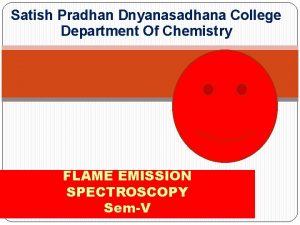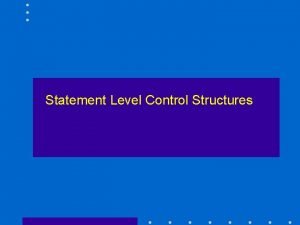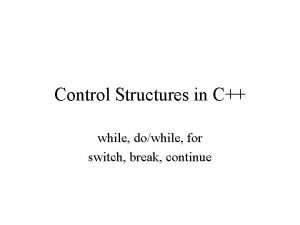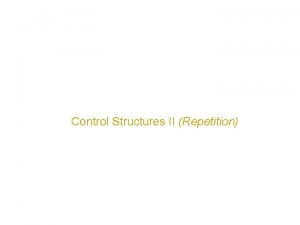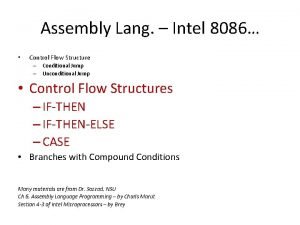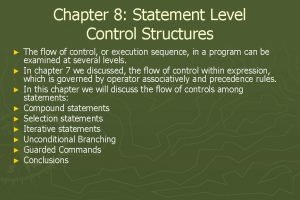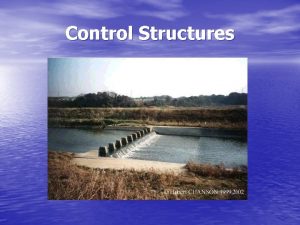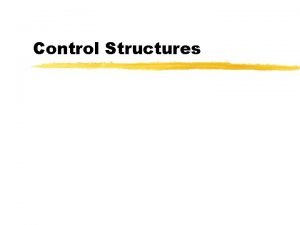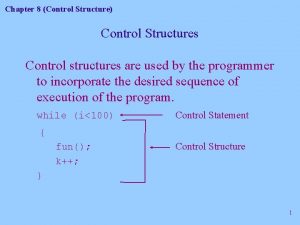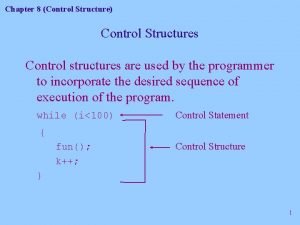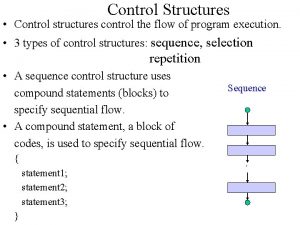Control Structures Control Structures Control structures are used












- Slides: 12

Control Structures

Control Structures Control structures are used to: • Control discharge and/or • Control water elevation

Sharp Crested Weir

• Sharp-crested weirs are those overflow structures whose crest width in the flow direction is small (< 25 cm). • There are many types of such structures, the following two types are the most common: – Rectangular sharp-crested weir. – V-notch sharp-crested weir.

• Rectangular Sharp-Crested weir

• The weir has a rectangular section. • There are two geometrical factors affects the discharge: – bc/B – h 1/p 1 The following equation can be used either to design the weir or to evaluate the discharge:

Where Q is the discharge in m 3/sec, Ce is a discharge coefficient, g is the gravitational acceleration, be is the effective weir’s width, h 1 is the water head above the crest. For practical reasons, the effective width is taken to be the weir’s width, bc.

The value of the discharge coefficient can be obtained from the following graph.

The following steps show to design the weir: • Assume a reasonable value for h 1 such as half the water depth of the waterway. • P 1 is then equal to ( d – h 1 ). • Assume the ratio ( bc/B ) equal 0. 6. • Obtain Ce from the graph. • Apply in the equation to solve for bc. • This is the first trail.

• Recalculate the ratio ( bc/B ), • Obtain a new value for Ce, • Apply again in the equation to obtain a new value for bc, • Repeat until convergence. If the characteristics of the weir are known, the discharge can be evaluated from the equation.

• Example: Design a sharp crested weir according to the following data; Q = 0. 4 m 3/sec, B = 1. 0 m, d = 0. 8 m • Sol. Assume p 1= 0. 4 m … h 1 = 0. 4 m h 1/p 1 = 1 … assume b/B = 0. 6 from graph … get Cd= 0. 61 Apply the equation … get b = 0. 88 m

b/B = 0. 88 … get Cd=0. 65 Apply the equation … get b = 0. 82 m b/B = 0. 82 … get Cd=0. 645 Apply the equation … get b = 0. 83 m Close … then b = 0. 83 m weir height = 0. 4 m
 Mikael ferm
Mikael ferm Homologous structures example
Homologous structures example Conditional macro expansion example
Conditional macro expansion example In a premix burner used in fes the fuel used is
In a premix burner used in fes the fuel used is In a premix burner used in fes the fuel used is
In a premix burner used in fes the fuel used is Hardware and control structures
Hardware and control structures Statement level control structures
Statement level control structures Control structures in php
Control structures in php Control structures in c
Control structures in c Repetition control statement
Repetition control statement Types of control structures
Types of control structures While loop in assembly language 8086
While loop in assembly language 8086 Statement level control structures
Statement level control structures



